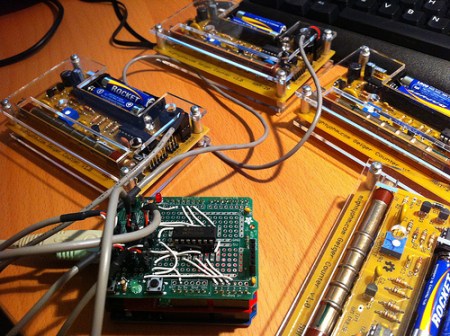[youtube=http://www.youtube.com/watch?v=–YZHMqHzPw]
[Vincent] started building this tank (translation) with a regular hobby model: the Heng Long Tiger 1. However, after considering some goals for the project, he decided to nearly gut the tank and redesign it, basing it on the Arduino and a standard Motor Shield. The possibilities with this setup are nearly endless. In its current form, the ArduTiger detects obstacles in front of it by way of three servo-mounted infrared rangefinders. The tank’s trajectory can be adjusted automatically based on feedback from the servo positions. Two additional short-range rangefinders detect if there is ground for the tank to roll over, keeping it safe from cliffs and black holes. [Vincent] plans on updating this beast by adding a Raspberry Pi for live video and advanced control… and maybe even adding a Geiger counter!

















